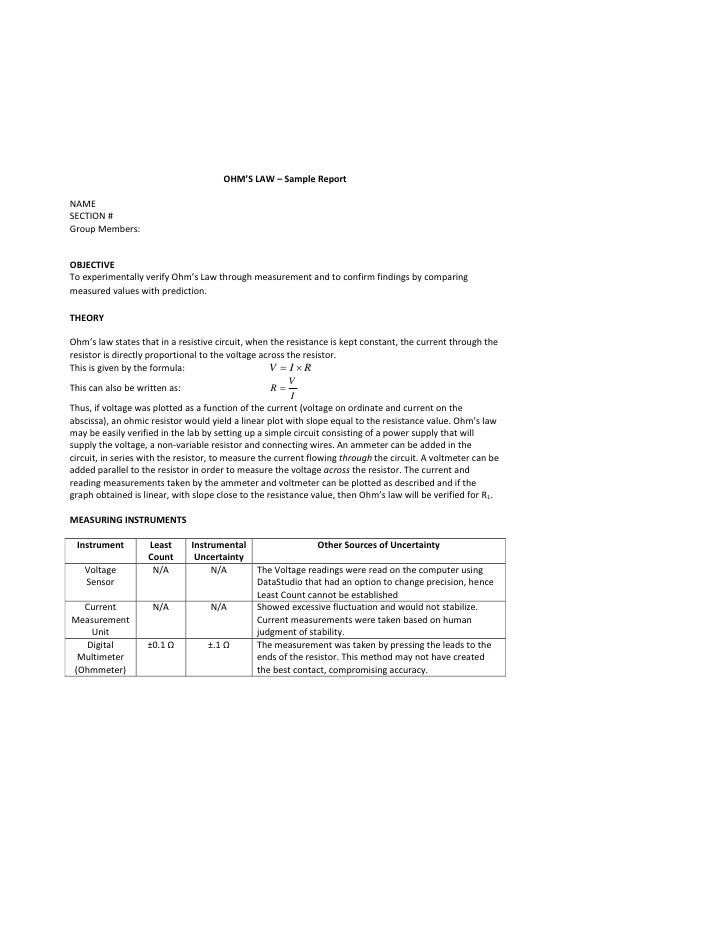Explain Ohm S Law With Experiment

Test the validity of ohm s law.
Explain ohm s law with experiment. Construct a circuit using resistors wires and a breadboard from a circuit diagram. The current flowing through the resistor is directly proportional to the voltage applied across it. Construct series and parallel circuits. The ammeter will show us the current i flowing through the circuit and the voltmeter will measure the potential difference v between the ends a and b of the wire.
Leds are fragile and can only have a certain amount of current flowing through them before they burn out. This relationship is known as ohm s law. 1 we have to start the test with a single cell. Introducing the constant of proportionality the resistance one arrives at the usual mathematical equation that describes this relationship.
Ohm s law states that the voltage or potential difference between two points is directly proportional to the current or electricity passing through the resistance and directly proportional to the resistance of the circuit the formula for ohm s law is v ir this relationship between current voltage and relationship was discovered by german scientist georg simon ohm. Here you can perform simple experiments remotely from home or elsewhere using resistors and instruments located in an instructional laboratory at blekinge institute of technology in sweden. Steps to execute ohm s law experiment. Or another funny way to explain ohm s law.
Ohm s law states that the current through a conductor between two points is directly proportional to the voltage across the two points. If the apply voltage across a circuit is 50v and a series connected resistor in the circuit which resistance is 10. An ohm s law experiment. Experiment to verify ohm s law 1.
We have to connect the circuit as shown in figure a. Click image to enlarge. In the documentation for an led there will always be a current rating. Ohm s law states that the amount of electric current through a conductor in a circuit is directly proportional to the voltage across it.
He finally published the law in 1827 and generalized his observations in single statement. Load analogy to understand the ohm s law. Ohm performed repeated experiments on a resistor applied different voltages measured current and found relationship between these quantities. Experiment to verify ohm s law rolla tyas amalia grade 11 for a conductor at constant temperature the current in the conductor is proportional to the potential difference across it introductionohm s law is used in electrical engineering to calculate the relationships betweencurrent voltage and resistance.
For this experiment we want to use a 9 volt battery to power an led.


















